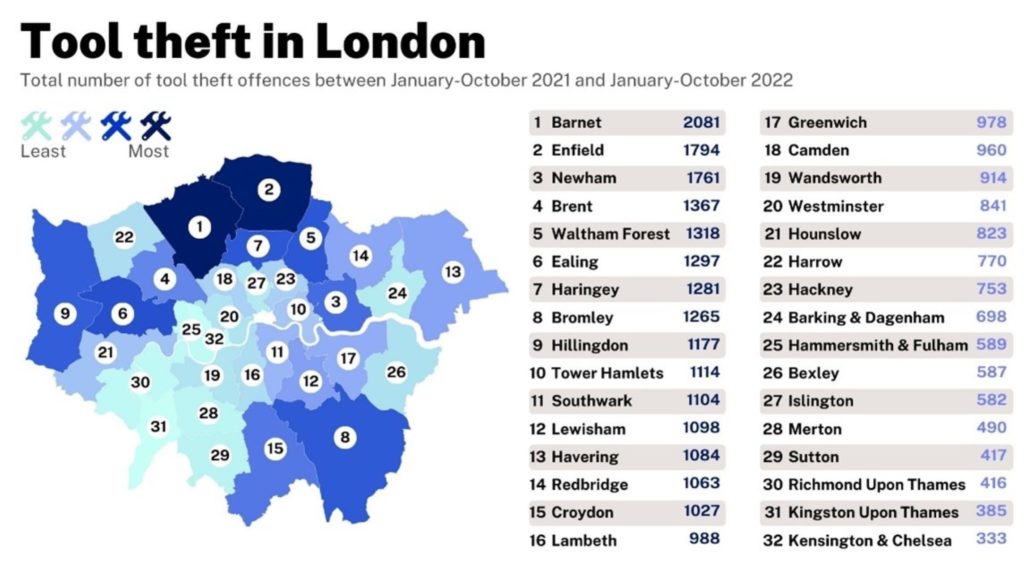Sunday, 5. February 2023
A £110 million scrappage scheme has been launched ahead of the expansion of London’s ultra-low emission zone (ULEZ).
The fund is accessible to low-income and disabled Londoners, but the vast majority of fleets will miss out.
Transport for London (TfL) says that the scrappage scheme is open to charities, sole traders and business with 10 or fewer employees registered in London.
They can apply for a £5,000 grant to scrap a van or £7,000 for a minibus, with a £5,000 grant also available to retrofit certain vans or minibuses.
Grants to scrap and replace a van or minibus with a fully electric vehicle (EV) are set at £7,500 and £9,500 respectively.
In launching the ULEZ scrappage scheme, TfL has also hiked the penalty charge notice (PCN) from January 30 for non-compliant vehicles entering the zone from £160 to £190 (reduced to £90 if paid within 14 days).
TfL says that the increase will “maintain the deterrent effect” of London’s ULEZ and “achieve the scheme’s air quality and health objectives”.
The Mayor of London, Sadiq Khan, said: “We need to get the most highly polluting vehicles off our roads, which are damaging the health of all Londoners, including drivers.
“The rising cost of living has been a key consideration for me, which is why we are launching this new and improved scrappage scheme – the biggest ever – to help low-income and disabled Londoners, businesses, sole traders and charities switch to cleaner vehicles, or support them to make the most of other transport options.”
Khan announced last year that the existing ULEZ would be expanded to operate across all London boroughs, up to the current Low Emission Zone (LEZ) boundary, from August 29.
The expanded ULEZ will continue to operate 24 hours a day, every day of the year (except Christmas Day).
To comply with the ULEZ, petrol cars and vans must be Euro 4 and diesel cars and vans must be Euro 6. Motorcycles and mopeds must be Euro 3 to comply.
Vehicles that do not meet the standards must pay the £12.50 daily charge.
Alex Williams, TfL’s chief customer and strategy officer, said: “Londoners are already choosing public transport, walking and cycling for the majority of trips and the Mayor’s new scrappage scheme will support more people to get rid of their highly polluting vehicles and make the switch to greener travel.
“These grants will play a significant role in ensuring smaller businesses, those on low incomes, disabled people and charities are fully prepared ahead of the expanded zone coming in later this year.”
In addition to the scrappage grants, Williams says that TfL is offering options for annual bus and tram passes as well as teaming up with other organisations to provide incentives that make it easier to travel more sustainably.
“This includes exciting offers from our partners, such as bike hire subscriptions, e-scooter discounts and car club deals,” added Williams.
“We would encourage drivers to take advantage of these fantastic ways to get around for less.”
However, Sue Robinson, chief executive of the National Franchised Dealers Association (NFDA), which represents car and commercial retailers across the UK, doubts how effective the scrappage scheme will be.
“Whilst the NFDA supports and is encouraged by the London Mayor’s decision to provide a financial incentive towards exchanging ageing and non-compliant vehicles for newer, greener modes of transport, we are severely concerned that this will not be enough and the scheme will continue to have negative implications for a large proportion of motorists,” she said.
“The total budget allocated for the scrappage scheme will not be sufficient to make an impact the level at which the Mayor is expecting.”
“By increasing the ultra-low emission zone to the entirety of London, it is forcing the residents of London to make a decision before they are ready.
She continued: “During a period of unprecedented financial struggle and in the midst of a cost of living crisis, families of low income may not be ready to make a transition to a newer vehicle even with the scrappage scheme.
“NFDA remains firmly against the decision to extend the ULEZ, or at least the timescale of enforcement is far too soon.
“Without the availability of government incentives and the commitment for more investment towards EV infrastructure to adequately prepare London for a complete transfer to EV adoption, this restriction to older ICE and diesel vehicles should not be implemented.”
To learn more about the scrappage scheme, visit the TfL website. By Graham Hill thanks to Fleet News
Share My Blogs With Others:
These icons link to social bookmarking sites where readers can share and discover new web pages.

























